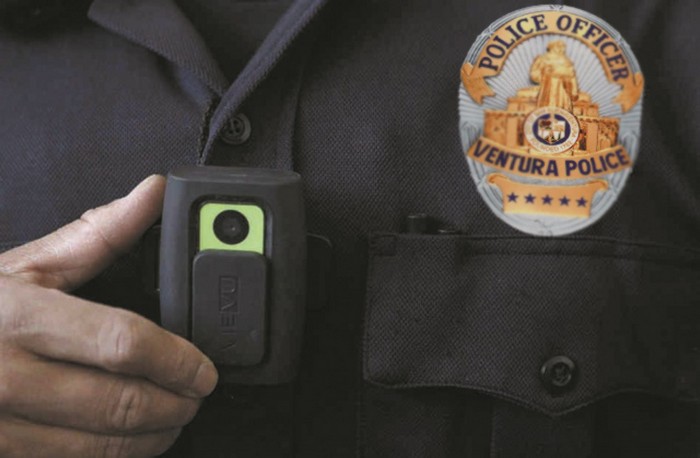 Body worn cameras has impressed the department.
Body worn cameras has impressed the department.
By Rebecca Wicks
A pilot program that has randomly-selected Ventura Police Department officers wearing cameras on their bodies since May, 2014 has impressed the department to the point they now aim to roll the program out department-wide.
The department is only half way through the year-long program, originally part of a research project headed by Detective Josh Young, a student at the University of Cambridge but has seen enough advantages to cause department heads to look to integrate cameras permanently. And, while the pilot program aims to measure specific outcomes including citizens’ complaints; use of force; and prosecution outcomes, Assistant Chief Brock Avery of the Ventura Police Department points to ways the cameras can work to help Ventura specifically that may be different from other police departments.
“We have a great police department and a lot of public support,” said Avery. “We don’t necessarily need body worn video for identifying misconduct; it’s another tool for success for us, for putting together better cases.”
While Avery is less concerned with recognizing officer wrong-doings, City Manager Mark Watkins sees how body worn video can helpful to the City when it or one of its officers is put in the position of defending its actions.
“In the event we are put in that position, of being accused, if you have video you have proof you are doing the right thing – it’s not what we said versus what they said,” said Watkins.
The department currently uses cameras which remain on, but do not record until an officer presses a button. When an officer presses that button, it automatically begins saving – beginning 30 seconds before the officer pressed the button. This means if an officer sees something which they deem important for example, someone getting rid of what may be evidence, the officer can press the button and it will capture the incident even if it happened just before pressing record.
According to Assistant Chief Avery, the department is beginning the process of pulling together a proposal to implement an ongoing body worn camera program. In addition to equipment costs the budget is likely to include a new full-time employee to manage the video data as well as storing the data for, in some cases, multiple years. He estimates startup costs for the program to be in the $400,000 range with ongoing year-to-year costs somewhere around $100,000.
“It will come down to funding,” said Avery who would like to see the program approved for the next fiscal year which would begin this summer. “It will be our job to show the need, and the value of a program like this.”
According to Watkins, the budget for a camera program would most likely first appear in April, 2015 when the larger budget is proposed and outlined for the City Council. And, while the budgeting process for the next fiscal year hasn’t begun yet, Watkins is optimistic about the City being able to fund a new program like this.
“We don’t have a complete picture yet, but looking at expenses and revenues, so far everything is tracking,” said Watkins who mentioned there may even be grant monies or other funds available to offset some of the startup costs of a program like this.
Watkins explained he hasn’t seen any data on the camera program yet, but from what he’s heard so far, believes the program has merit.
“There is so much technology available, it’s a matter of figuring out which technology to invest in – and that goes for all the departments in the city,” said Wakins.

